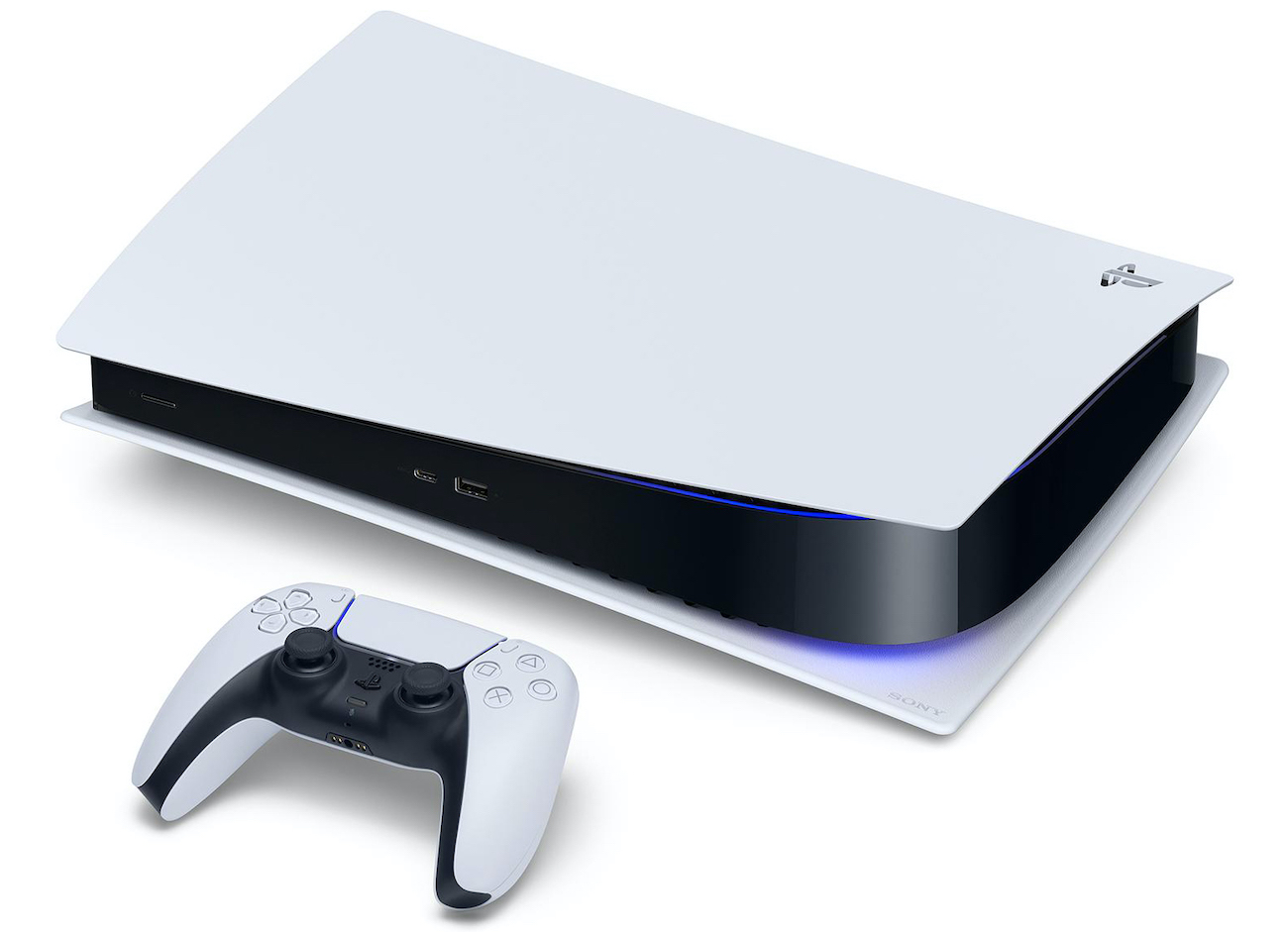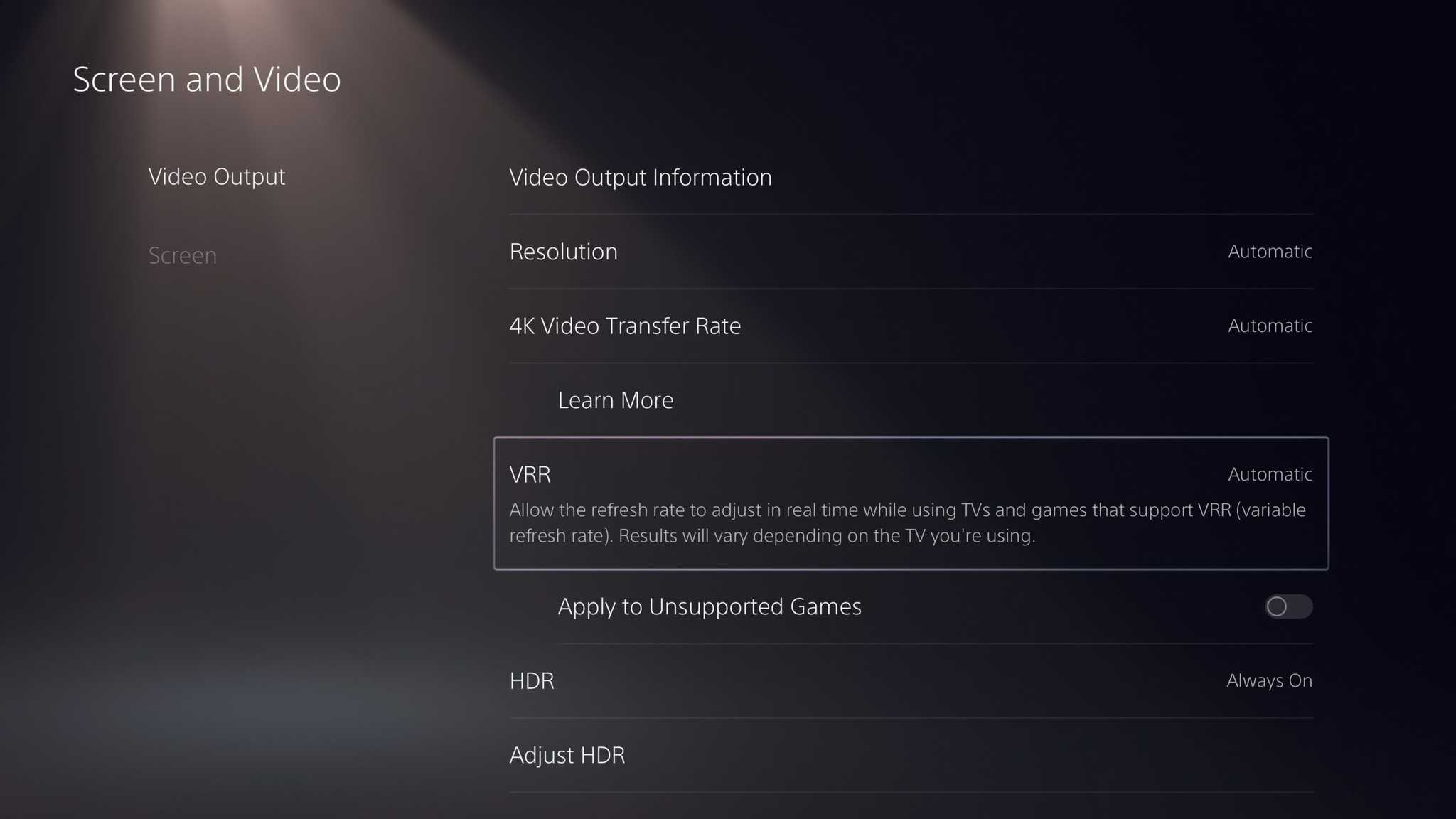It's been on Xbox for years and LG TVs for almost as long, so what is Sony’s problem with VRR?
We're finally seeing variable refresh rates for Sony TVs, but still not on its own games console, the PS5

So Sony has just dropped another software update for the PS5. Given that this new, catchily named 22.01-05.00.00 firmware doesn’t actually seem to have broken anything, we guess its arrival is a good thing. Certainly it’s nice to see that it finally introduces support for the Automatic Low Latency Mode feature that enables compatible TVs to switch in and out of their fast-response Game presets depending on which sort of content they’re outputting.
However, as with every software update that’s come the PS5’s way since the console launched the best part of a year and a half ago, installing the latest firmware is accompanied by a now familiar sting of disappointment as it turns out that, yet again, it doesn’t bring support for variable refresh rates. And, as with every VRR-less update that’s come before, my cry of ‘why the hell is it taking so long?!’ just gets louder.
Promises, promises...

Sony does at least seem to accept this time that the ongoing absence of a key gaming feature that it’s been promising to bring to the PS5 since before the console launched can no longer pass without comment. An official PlayStation Blogpost released this week states that Sony is "planning to release a Variable Refresh Rate (VRR) feature for the PlayStation 5 in the coming months".
The post even went so far as to provide a screen shot (above) of a PS5 Video Output Information screen showing a VRR section, and discussed how PS5 VRR could (ideally) be baked into a game’s code, including being added to already-launched titles via updates, or added to any game (with less guaranteed effectiveness) by the console. Yay.
While it’s good to see Sony at long last putting some meat on the bones of its endless VRR promises, the words that most stood out to me from Sony’s blog were ‘in the coming months’. Not coming days, or weeks, but months. Seriously? PlayStation still can’t say anything more definite than ‘in the coming months’ after all this time? Why? Exactly what is so difficult about making VRR work on a console as cutting edge as the PS5?
When Sony promised in pre-launch 2020 press materials that VRR would come to the PS5 and then even went so far as to actually mention the feature on the PS5’s box, nobody – likely not even Sony itself – could possibly have envisaged that nearly a year and a half later the feature still wouldn’t be here. And the wait has become all the more painful, of course, because VRR has been available on the PS5’s arch rival, the Xbox Series X, from day one. In fact, VRR support launched on Xbox consoles – and not just the most powerful ones, either – way back in spring 2018, when the consoles of the day were the Xbox One S and X.
Four years behind Xbox

So we’re now actually looking at Xbox owners enjoying a really key gaming graphics advantage for a full four years without PlayStation being able to catch up. This really is hard to comprehend given, a) the motivation surely created by the massive rivalry there is between the two console brands (and their respective fans), and b) that VRR doesn’t seem, at least to a layman, to be all that complicated to deliver.
Get the What Hi-Fi? Newsletter
The latest hi-fi, home cinema and tech news, reviews, buying advice and deals, direct to your inbox.
Wracking our brains to come up with a reason for the PS5’s (and arguably also the PS4’s!) VRR lethargy has come up with a few tenuous possibilities. One would be that when VRR first appeared, TVs with the necessary HDMI connectivity and refresh rate flexibility were few and far between. In fact, VRR support on TVs is still disappointingly rare on relatively mid-range and, especially, budget TVs. So perhaps PlayStation could say it didn’t want to devote development resources too early to a feature that until recently wasn’t widely supported by TVs.
This argument isn’t helped, though, by the fact that Sony has also struggled more than any other premium brand to bring VRR support to its TVs. While LG, for instance, has been offering comprehensive VRR support on the vast majority of its OLED TVs since 2019, Sony only managed to deliver it last October, via a (you guessed it) massively delayed firmware update. And even then only to a single, not even flagship model from its 2020 range. The even more delayed update for 2021 TVs arrived just a few weeks ago.
Sony’s first attempts to add VRR to its TVs also turned out to be quite a buggy mess considering the feature had been handled so well by rivals for so long by the time Sony’s effort turned up.
The fact that Sony’s own TVs struggle with VRR, despite Sony having an actual games console that’s been promising the feature since 2020, points towards some sort of bizarre general Sony-wide hang up with VRR, rather than PlayStation just waiting patiently for more TVs to turn up with VRR support.
From the HDMI horse's mouth
This brings us to another excuse for being so late to the VRR party that we’ve heard repeatedly from Sony’s TV business (Sony’s console representatives have repeatedly refused to engage with VRR related questions we’ve put to them over the years). Namely that variable refresh rate technology hasn’t been completely finished and ratified, particularly when it comes to the HDMI connection ‘handshake’ side of things.
While this always sounded a bit strange when other brands seem to have no such VRR concerns, the history of home entertainment technology is certainly littered with examples of hardware manufacturers causing problems by rushing to deploy new features before all the necessary standards are fully in place. So we gave Sony the benefit of the doubt on this for a bit. Even though the first console iteration of VRR, on the Xbox One S and X consoles in 2018, was actually delivered through no less a third party technical giant than AMD, with its Freesync platform.
When we were still hearing the same line about VRR not being formally ratified on an HDMI level as late as spring 2021, though, we thought it was time to go straight to the horse’s mouth and actually ask the HDMI Licensing Administrator about the situation. And after some initial confusion based on the fact that it couldn’t really even seem to comprehend why we were asking what we were asking, on June 30 2021 (so almost a year ago) we got this pretty categorical response from the HDMI Licensing Administrator’s VP of Marketing and Operations, Brad Bramy: “The HDMI Licensing Administrator – the operation that conducts marketing and promotion for HDMI Founders and HDMI Forum – is not sure what Sony is referring to, as VRR has been available on other devices for several months”.
When Sony finally started to upgrade its TVs with VRR support in October last year, it seemed for sure that this heralded the imminent arrival of VRR on the PS5. In fact, everyone's favourite theory as to why VRR kept failing to appear on Sony TVs was that the brand was actually waiting for the PS5 to be VRR-ready, so it could deliver VRR across its TV and PlayStation divisions simultaneously, in some big and highly marketable show of cross-company unity.
But no. Months have already passed since Sony’s already long-overdue VRR TV debut, and now we learn that we may be looking at the passing of many more months before the PS5 catches up with its parent company’s TVs – not to mention, of course, the rest of the gaming and TV world.
So I come back again to my initial position of just not being able to understand what Sony’s problem with VRR truly is, and feeling increasingly frustrated about having to still play games such as Elden Ring and Ghostwire: Tokyo without VRR when their gameplay would clearly (as Elden Ring’s Xbox Series X version proves) benefit from it.
All we can do, we guess, is hope against hope that ‘coming months’ ends up referring to something closer to April than December…
MORE:
Looking for a VRR-capable TV? Our best gaming TVs roundup has you covered
If you haven't yet chosen a next-gen console, here's the PS5 vs Xbox Series X showdown
John Archer has written about TVs, projectors and other AV gear for, terrifyingly, nearly 30 years. Having started out with a brief but fun stint at Amiga Action magazine and then another brief, rather less fun stint working for Hansard in the Houses Of Parliament, he finally got into writing about AV kit properly at What Video and Home Cinema Choice magazines, eventually becoming Deputy Editor at the latter, before going freelance. As a freelancer John has covered AV technology for just about every tech magazine and website going, including Forbes, T3, TechRadar and Trusted Reviews. When not testing AV gear, John can usually be found gaming far more than is healthy for a middle-aged man, or at the gym trying and failing to make up for the amount of time he spends staring at screens.
